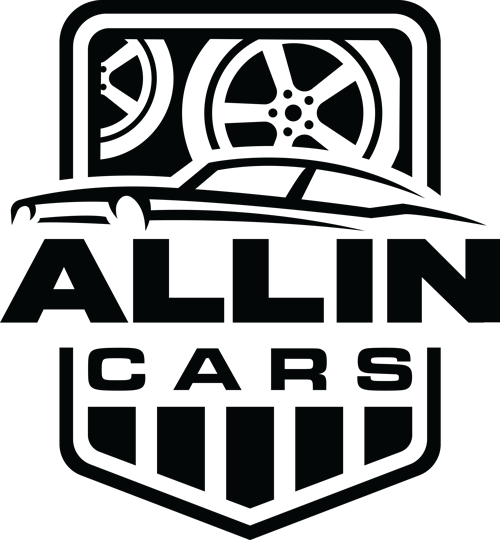The Upkeep Costs of a Used Car vs a New Car
Posted Monday, Jul 17, 2023
The Upkeep Costs of a Used Car vs a New Car
Owning a car requires a considerable financial commitment that extends beyond the initial cost of ownership, whether it is new or old. The maintenance cost is one of the most significant factors to consider when beginning your automobile journey.
In this article, we'll examine the differences in maintenance expenditures with owning a new or a used car, giving you the knowledge, you need to make wise choices and drive without any worries. Join us as we investigate, examine, and break down break down these costs to help you get the greatest value for your car without going over budget.
Maintenance Costs of Used Cars
Effect of Depreciation
When analyzing the financial effects of purchasing a secondhand car, the idea of depreciation is essential. When a new car is driven out of the dealer’s showroom, it depreciates the most during the first few miles. Up to 20% of the value of some new cars might be lost in the first year.
This rapid depreciation continues over the following several years, frequently resulting in a situation where the vehicle's value declines more quickly than the outstanding balance of the loan used to buy it.
In contrast, the steepest portion of the depreciation curve has already been experienced by a secondhand car, hence it loses value more gradually and steadily. The buyer of a secondhand car may save a lot of money because of the slower depreciation.
The entire cost of having a used car, which includes the purchase price and the upkeep, is frequently less than the total expense of having a new car, even though the older car requires more care over time. The resale value of a used automobile after many years of ownership can be nearer to its initial cost than for a new car bought simultaneously; therefore, this depreciation element is particularly significant for customers who expect to resell their vehicle in a few years.
Maintenance Predictability
Used cars frequently have more predictable maintenance needs than new ones. A thorough service history is often provided when you buy a used automobile, particularly from an established dealer. This history may contain details about previous fixes, regular maintenance, and even notes about recurrent problems. You can use this information to create an outline of what to expect from the car in the future.
This consistency makes it possible to accurately budget for upcoming maintenance expenses. For example, if the records indicate a history of brake servicing, you can plan and budget for these costs. This knowledge can help you plan ahead financially and provide you with peace of mind knowing you understand the vehicle's requirements. With new automobiles, this level of transparency is sometimes absent since unforeseen production problems may emerge after the sale.
Parts Are Available and Reasonably Priced
When it comes to the accessibility and price of parts, used cars usually offer a major benefit. Because there is a large market for old auto components, they are inexpensive and widely available. On the other hand, parts for more recent models, particularly those from luxury brands, can cost more money. They frequently need to be bought at a premium price straight from the producer or from authorized resellers.
Older models frequently benefit from mechanics' more extensive knowledge bases. The widespread knowledge and understanding of the cars' typical issues, peculiarities, and repair techniques lead to simpler and frequently less expensive repair procedures.
On the other hand, newer cars, especially those with cutting-edge innovations, can require specialized servicing or parts, which could result in more expensive repair and maintenance charges. Finding a mechanic qualified to service a new model can be tough, which increases the complexity and cost.
Maintenance Costs for New Cars
There are different kinds of maintenance expenditures for new cars, each with its own considerations and associated prices. Here, we'll examine these categories and talk about how they apply to buying a new car.
Routine Maintenance
Certain parts will inevitably wear out and need to be replaced as your car gets older and travels farther. This is a normal outcome of the mechanical stress and exposure to the environment that cars frequently experience. Wiper blades, air filters, and even critical components of the engine or gearbox could all require replacement, as could other less essential but more expensive parts like the batteries or tires.
Depending on the particular item that needs to be replaced, the price of replacing these parts can vary greatly. For instance, changing a simple air filter can be affordable and frequently something that vehicle owners can accomplish themselves with a little research and work. However, replacing more intricate or essential elements, such as the gearbox or engine parts, can be rather expensive.
The expense of part replacements can be considerably impacted by the type of car you drive. For instance, luxury cars frequently use high-end, specialized parts that can cost more than those used in cars that are less expensive.
Oil Changes
Oil changes are normally necessary for newer vehicles every 5,000 to 7,500 miles; however, driving circumstances and style might affect this range. Oil changes ought to be performed annually even if the mileage barrier is not reached. Standard oil can cost somewhere between $25 and $55, whereas synthetic oil might cost anywhere between $45 and $75.
Replacement of Windscreen Wipers and Brake Pad Replacement
Wipers should be changed every six to twelve months or promptly when performance problems are discovered, based on their condition and usage. Driving circumstances and habits play a big role in how often brake pads need to be changed. Drivers on the highway or in cities who brake frequently may require repairs more quickly.
Insurance
Insurance is a significant additional expense that goes with owning a car. Due to its higher original cost, a new car is more expensive to insure than a used one. The explanation is straightforward – if a brand-new car is involved in an accident, the insurance provider will have to shell out more money to fix or replace it. The premium you pay reflects this elevated risk.
Insurance companies base premiums on a number of variables, including the price of the car, its safety ranking, the likelihood of theft, and the driver's driving record. New cars frequently have higher insurance premiums since they are typically more expensive, contain more valuable parts, and might be more alluring targets for theft. One reason why used automobiles can be less expensive to insure is that the cost of insurance normally lowers as the car ages and depreciates.
Final Thoughts
In conclusion, the choice between a new and used car purchase involves more factors than just the upfront cost and style preferences. It necessitates a comprehensive assessment of the long-term costs, especially the maintenance costs. Knowing your options will help you make a decision that fits your budget and lifestyle needs, whether you're pulled to the allure of a fresh car's modern conveniences and initial low-maintenance duration or you're thinking about a used car for its slower depreciation and lower total cost of ownership.
The staff at Allin Cars is here to help you if you need professional guidance on maintenance expenses or assistance in selecting the ideal vehicle for your requirements. Allin Cars specializes in automobile maintenance and purchases and has a wealth of industry knowledge. We can offer thorough advice and services that will save you money and time.


